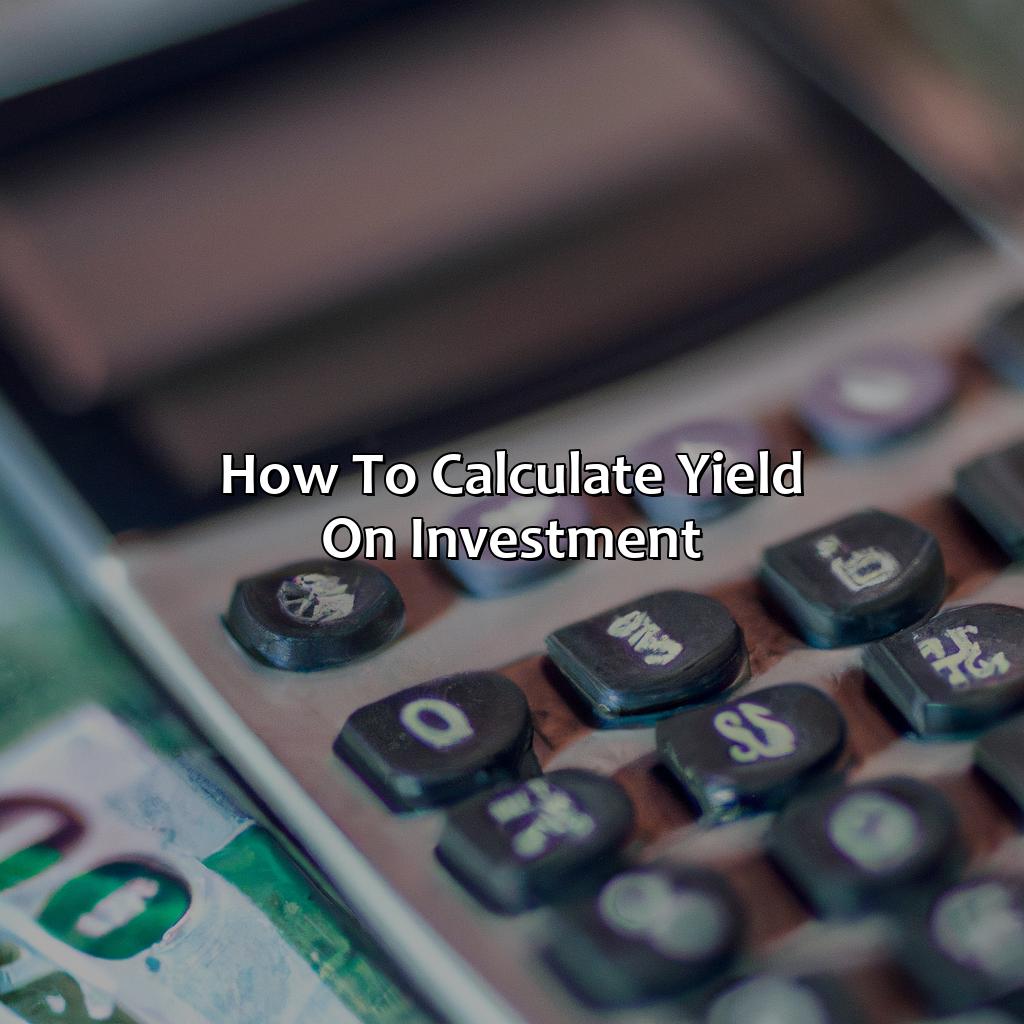How To Calculate Yield On Investment?
Key Takeaway:
- Yield on Investment is a useful financial metric for determining the profitability of an investment.
- Yield on Investment is calculated by dividing the annual income of an investment by its cost.
- It is important to calculate Yield on Investment in order to make informed investment decisions and compare the profitability of different investments.
Are you looking for a secure way to maximize your returns on investments? Understand how to calculate yield on investment, and find out the best investment options for you!
Understanding Yield on Investment
Investment Yield Calculation: A Comprehensive Guide
When it comes to evaluating an investment, understanding its yield is crucial. Yield on investment refers to the amount of return generated on a particular investment based on its cost. By calculating the yield, one can assess the investment’s profitability and decide whether to invest further.
To calculate the yield on investment, one needs to know the investment’s cost and the income generated from it. The yield is expressed as a percentage and can be calculated using various formulas, depending on the investment type. For instance, the yield on a bond can be calculated by dividing the annual interest by the bond’s price and multiplying it by 100.
It’s important to note that yield differs from capital gains in that it measures the income generated by an investment instead of the change in its price. And, yield tends to fluctuate based on the investment’s performance and market conditions.
To make informed decisions, investors should be familiar with various types of yield, including:
- Current yield
- Dividend yield
- Yield to maturity, among others.
Conducting thorough research and monitoring the current market trends can also help investors maximize their returns.
Investors who neglect to evaluate yield on investment may miss out on promising opportunities or end up with lackluster returns. Therefore, it’s essential to grasp the basics of yield calculation and keep an eye on the investment’s performance.
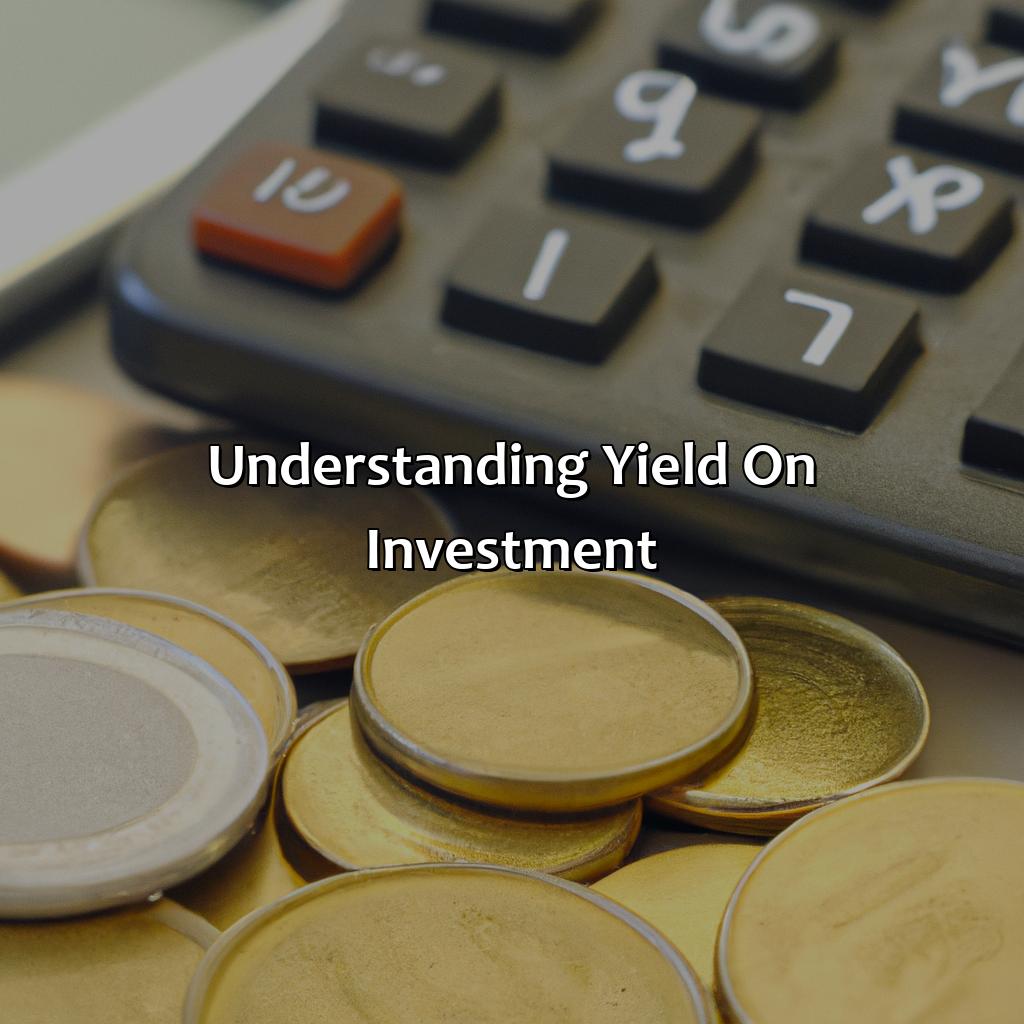
Image credits: retiregenz.com by Harry Arnold
Definition of Yield on Investment
Investment yield refers to the return earned on an investment over a specific time period, expressed as a percentage of the initial investment. It takes into account both capital gains and income generated by the investment. Investment yield is an important metric for assessing the profitability of different investment options and making informed decisions about where to allocate funds.
To calculate the investment yield, you need to divide the total amount of return earned by the initial investment and then multiply it by 100. This will give you the yield as a percentage. It is important to note that investment yield can vary widely depending on the type of investment, the investment duration, and relevant market conditions.
While it is crucial to consider investment yield, it should not be the only factor when making investment decisions. Other factors such as risk, liquidity, and diversification also play an important role. It is recommended to consult with a financial advisor and conduct thorough research before making any investments.
To enhance your investment yield, you could consider:
- Reinvesting your earnings
- Regularly reviewing and adjusting your portfolio
- Exploring different investment options
By increasing your investment yield, you can maximize your returns and achieve your financial goals.
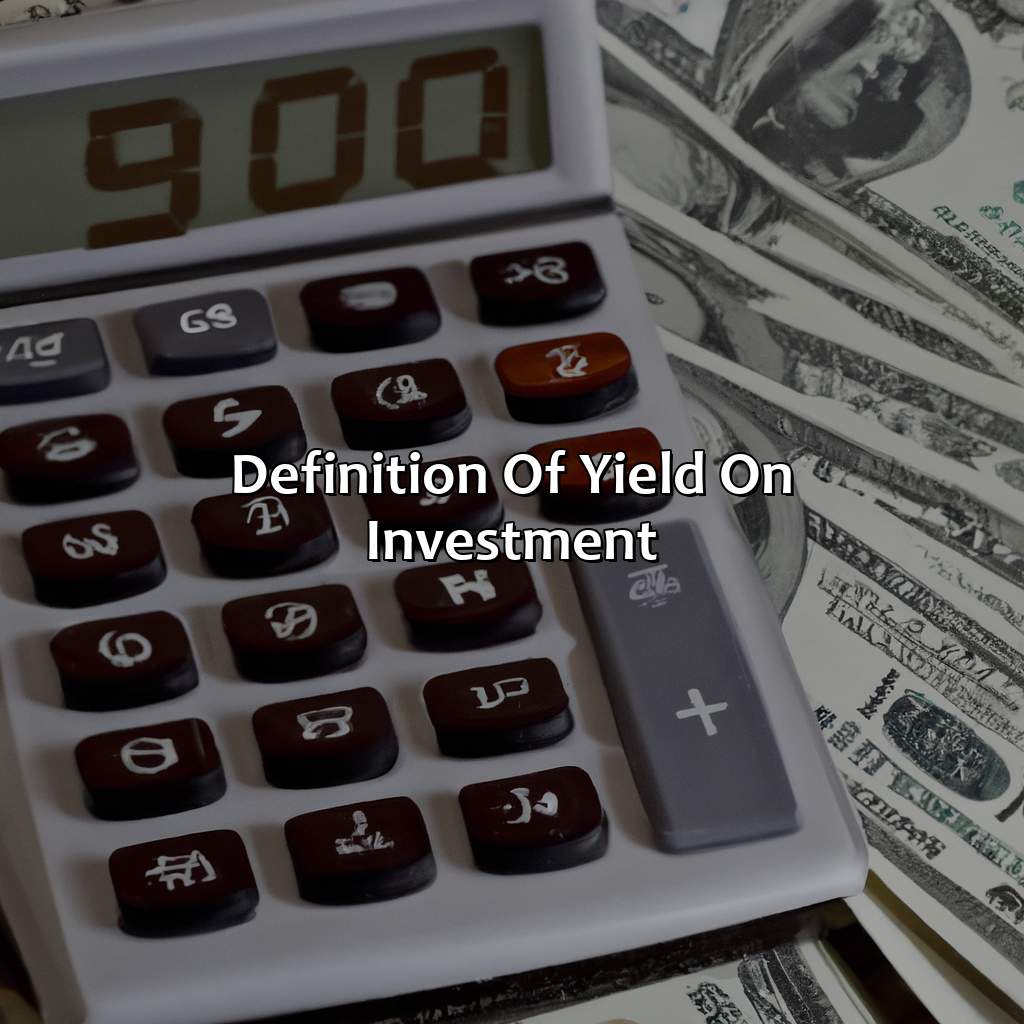
Image credits: retiregenz.com by David Jones
How to Calculate Yield on Investment
Calculating investment yield? You’ll need the formula! This guide will give it to you. Plus, a step-by-step example. With this knowledge, you’ll be able to accurately assess your investment’s performance. Yield calculation – now you can do it!
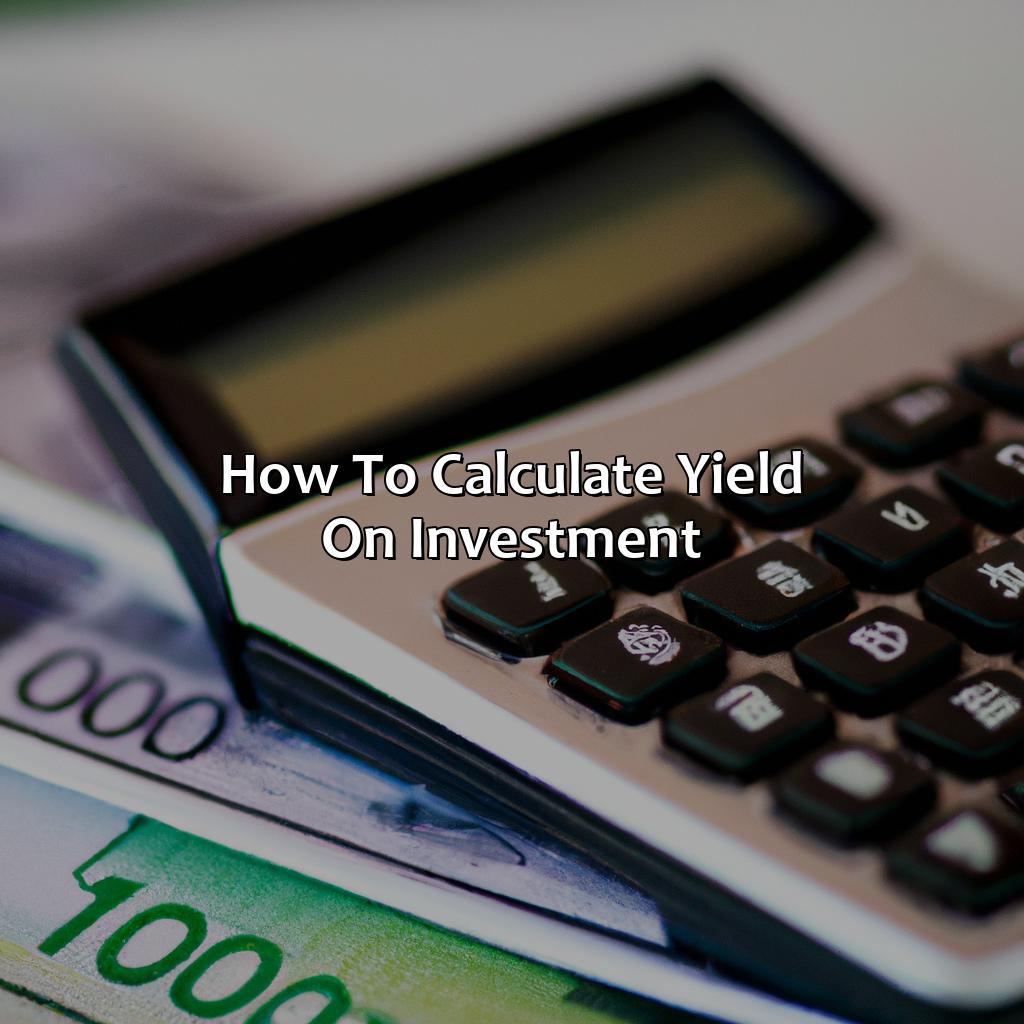
Image credits: retiregenz.com by Joel Duncun
Formula for Yield Calculation
To derive the expected returns on any investment, one needs to determine the profit or income generated. This can be achieved by calculating the yield of the investment in question.
Here is a table to better understand the concept of yield:
| Initial Investment | Periodic Payments | Maturity Value | Yield |
|---|---|---|---|
| $10,000 | $1,000 every 6 months | $12,000 | 8% |
| $5,000 | $750 every 3 months | $7,000 | 9% |
| $15,000 | $1,500 every year | $18,000 | 7.5% |
For calculating the yield on investment, one needs to consider three factors – initial investment, periodic payments, and maturity value. These details can be used with the given formula to arrive at the expected yield.
In addition to considering these factors, it is also important to keep in mind that yield depends on several other factors such as market conditions, interest rates and a company’s performance.
One Pro Tip for obtaining accurate results is to double-check all inputs before factoring it into the formula.
Calculating yield on investment is like playing a game of math Sudoku – challenging, but ultimately satisfying.
Example Calculation of Yield on Investment
To compute the yield on investment, you need to consider different factors, such as the initial investment amount, income generated, and the holding period. Here is an example of how to calculate yield on investment using a formula.
| Initial Investment Amount | $10,000 |
| Investment Gain/Loss | $1,000 |
| Dividend Income Received | $500 |
| Holding Period (in years) | 3 |
For this example calculation of yield on investment, we assume an initial investment amount of $10,000 that generates $1,000 in investment gain or loss and $500 in dividend income within a holding period of three years.
An essential factor to note when calculating yields is that it takes time into account. Unlike other ratios or percentages that only describe periodic performance such as annual returns or quarterly dividends. Yield takes care of changes over a more extended period during which investments are held.
Knowing how to determine the yield on your investments can help you make well-informed decisions about where to invest and monitor current holdings’ performance. Don’t miss out; start by calculating your yield on investments today.
Yield on investment is like the GPS for your financial journey, guiding you towards your money goals with precision.
Importance of Yield on Investment
Investing in any asset requires sufficient knowledge of the potential yield, which is the return on investment. Understanding the Importance of Yield on Investment is crucial in making informed financial decisions. A higher yield indicates a better return, while a lower yield may result in a loss. Yield also impacts cash flow, reinvestment opportunities, and risk management. By calculating yield, investors can compare various investment options and evaluate their potential profitability.
To accurately calculate yield on investment, investors need to consider factors such as the initial investment, interest rates, coupon payments, and the duration of the investment. It is essential to factor in any fees and expenses associated with the investment, such as management fees, transaction costs, and taxes. By doing so, investors can determine the net yield accurately.
Additionally, yield on investment should be monitored regularly to inform decision-making and assess the investment’s performance. This evaluation of yield can identify opportunities to reinvest profits or cut losses and ensure that investment goals align with financial objectives.
Investors should consider yield when choosing an investment option and prioritize those with a higher yield to maximize profits. Failing to consider yield may result in missed opportunities or losses. Therefore, investors must understand the Importance of Yield on Investment and make informed decisions based on calculated yield.
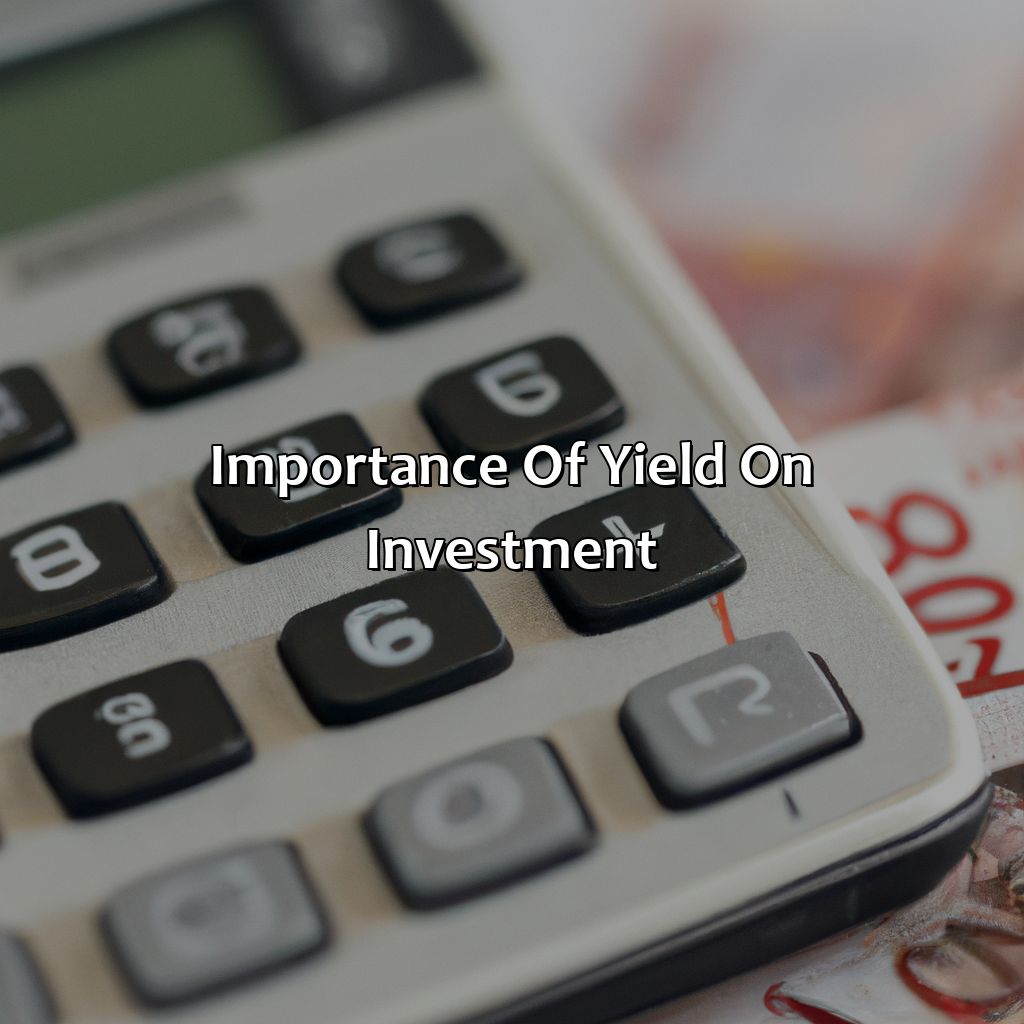
Image credits: retiregenz.com by David Woodhock
Some Facts About How to Calculate Yield on Investment:
- ✅ Yield on investment is the return on investment expressed as a percentage of the initial investment. (Source: The Balance)
- ✅ Yield on investment can be calculated using a simple formula: (income – expenses) / initial investment x 100%. (Source: Corporate Finance Institute)
- ✅ There are different types of yield, including current yield, yield to maturity, and yield on cost. (Source: Investopedia)
- ✅ Yield can fluctuate depending on factors such as interest rates, inflation, and market conditions. (Source: Fidelity Investments)
- ✅ It’s essential to consider taxes and fees when calculating yield on investment to determine the actual return on investment. (Source: Forbes)
FAQs about How To Calculate Yield On Investment?
How do I calculate yield on investment?
Yield on investment measures the return on an investment. You can calculate the yield on investment in several ways depending on the type of investment you have made. For instance, if you have made a fixed income investment, use the yield to maturity. On the other hand, if you have made a stock investment, use the dividend yield.
What is the formula for calculating yield on investment?
The formula for calculating yield on investment depends on the type of investment. If you have made a fixed income investment, use the following formula: Yield to Maturity = (Annual Coupon Payment + ((Face Value – Price)/Years to Maturity)) / ((Face Value + Price)/2).
For stock investments, use the following formula: Dividend Yield % = Annual Dividend Per Share / Current Stock Price x 100
What are some factors that can affect yield on investment?
Some of the factors that can affect yield on investment include the creditworthiness of a company or issuer, inflation rates, interest rates, and market demand for the investment. Additionally, the length of time an investment is held and any price changes or share splits can also affect yield.
What is the difference between yield on investment and return on investment?
Yield on investment focuses solely on the return generated by an investment, while return on investment is a broader metric that compares the gains from an investment to the cost of making the investment in the first place. Return on investment takes into account the cost of the investment, while yield on investment does not.
How can I use yield on investment to compare different investment options?
By calculating and comparing the yield on investment from different investment options, you can determine which investment is likely to provide the highest return. For instance, if you are considering two fixed income investments, you can compare their yields to maturity to see which one offers a better potential return.
What is a good yield on investment?
A good yield on investment varies depending on the type of investment. A higher yield on investment is generally preferred as it indicates a higher potential return. However, it is always important to consider the risk involved in an investment, as higher yields are often associated with higher risks.
